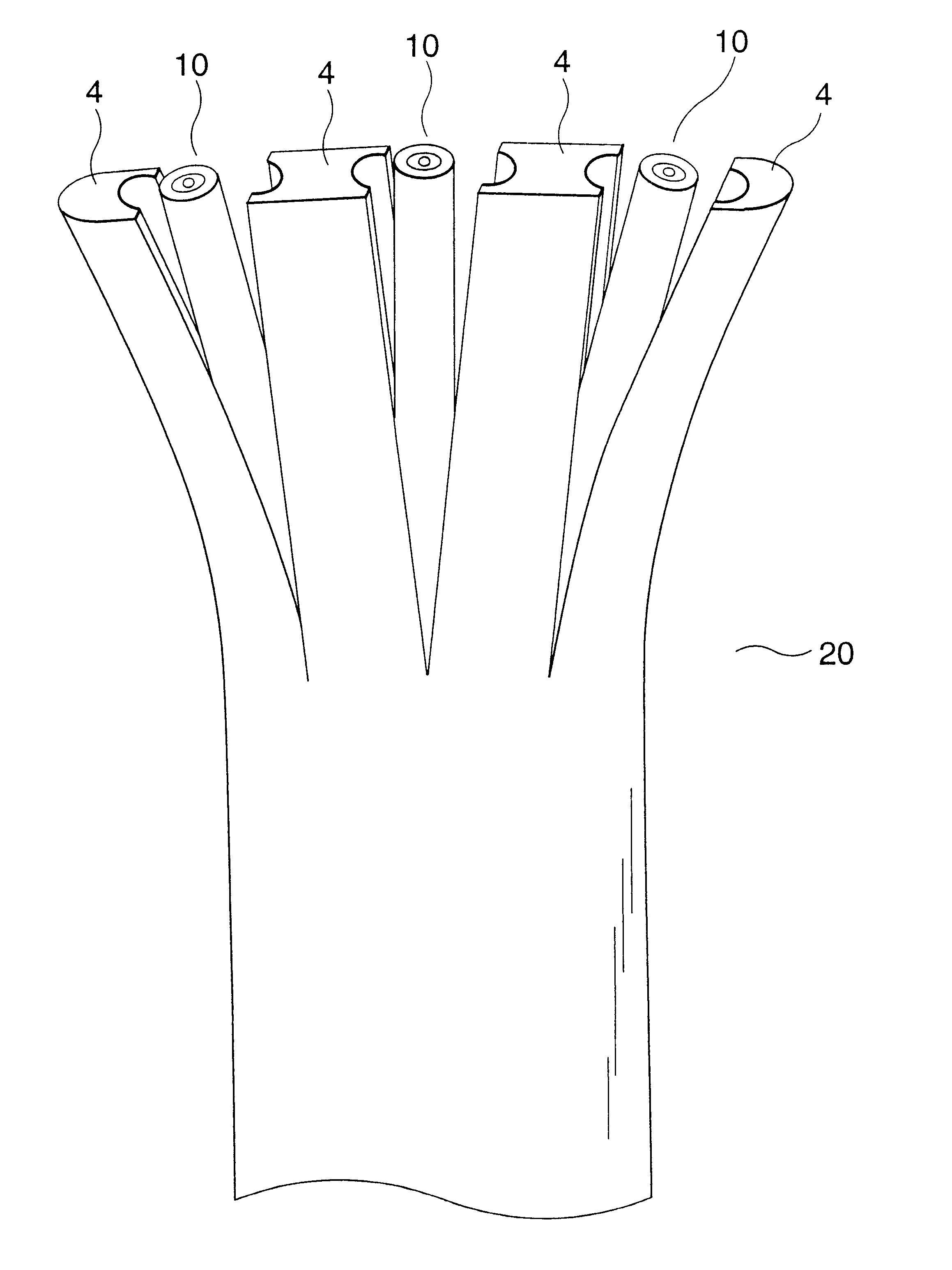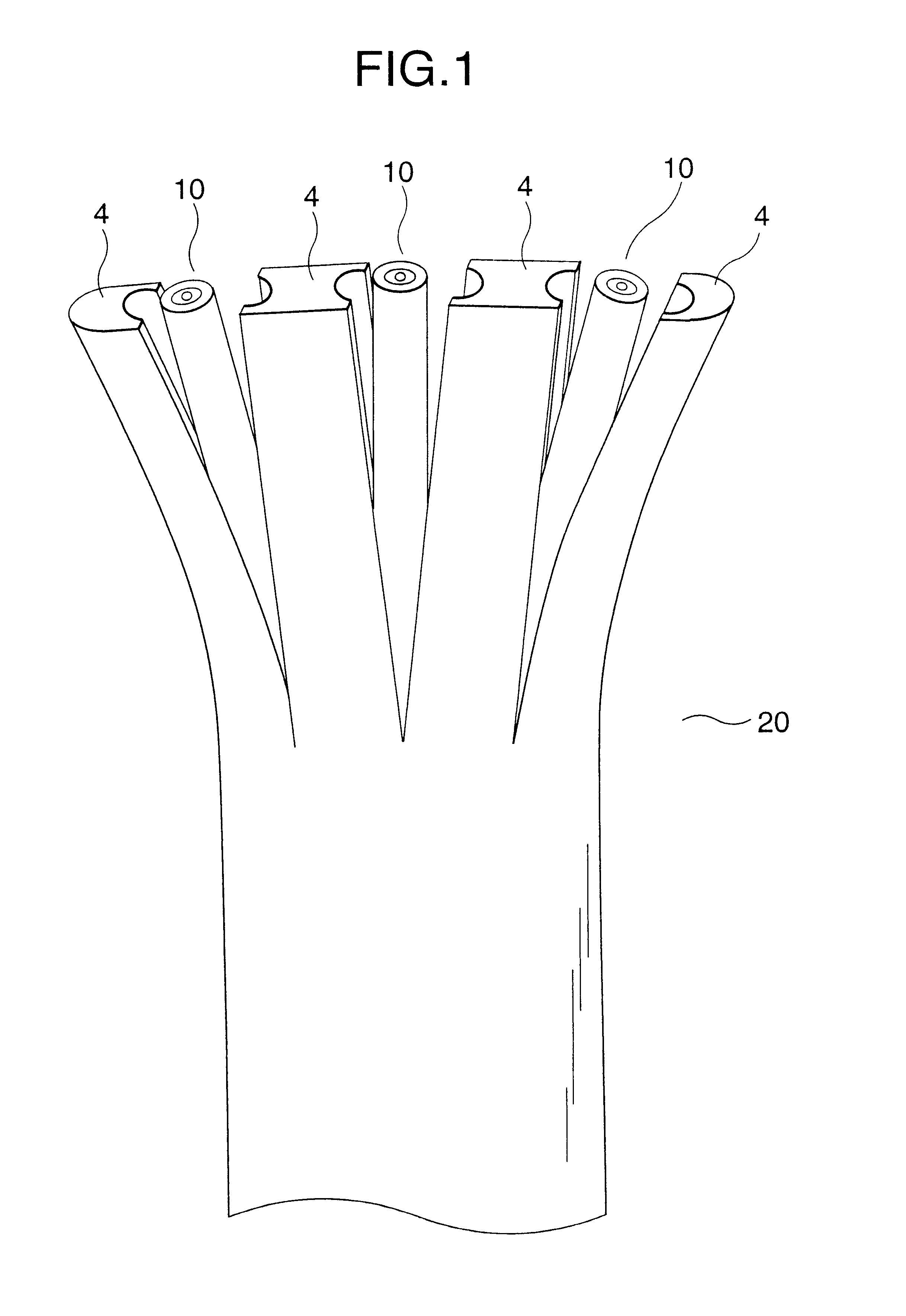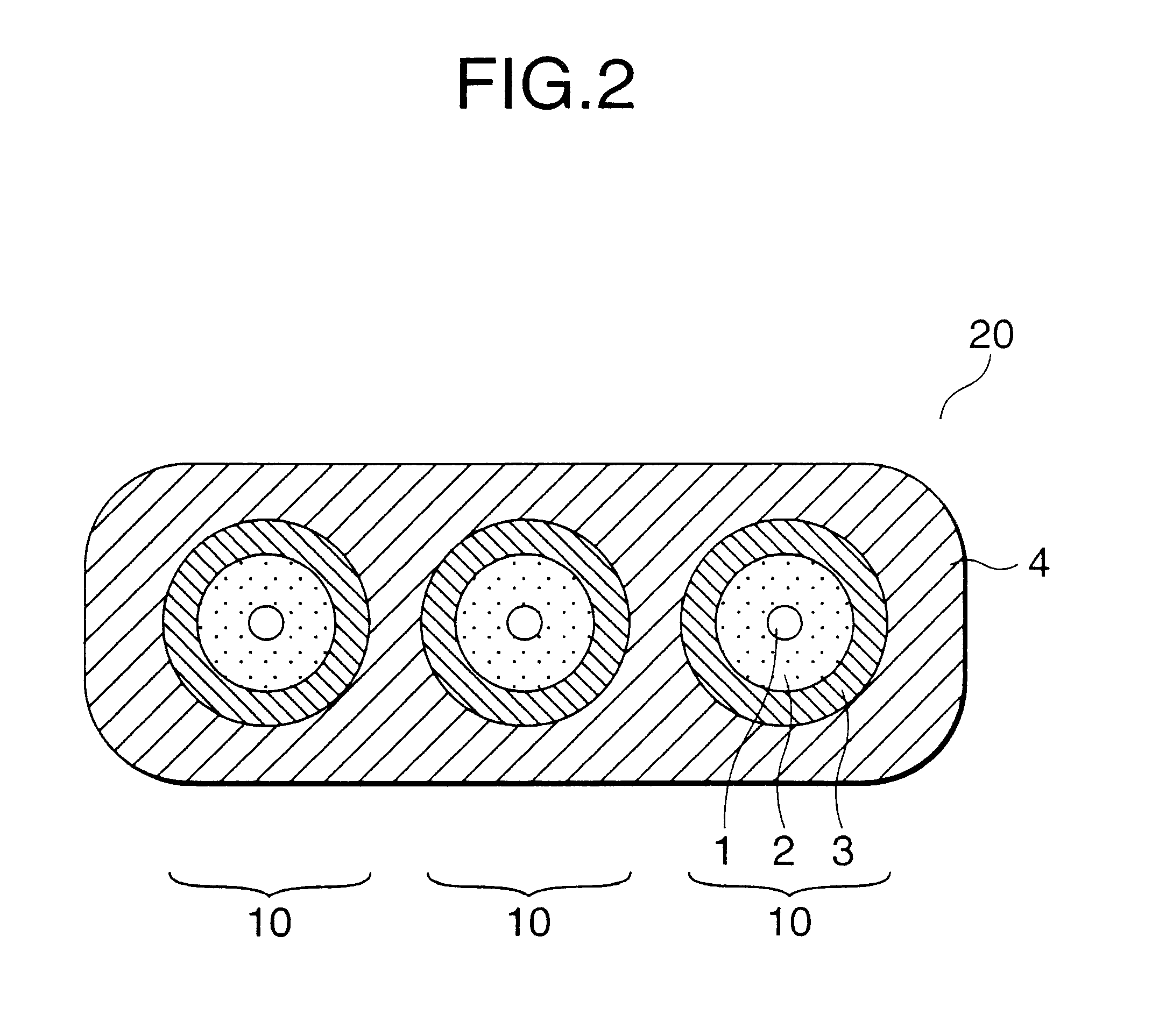Optical cable
a flat-type, optical cable technology, applied in the direction of optics, fibre mechanical structures, instruments, etc., can solve the problems of reducing the efficiency of work, requiring revealing work to be tried, damage to optical-fiber cords, etc., to achieve the effect of improving work efficiency
- Summary
- Abstract
- Description
- Claims
- Application Information
AI Technical Summary
Benefits of technology
Problems solved by technology
Method used
Image
Examples
examples
(Production of Flat Type Optical Cable)
The flat type optical cable as a subject of the embodiments of the present invention has a cross-sectional structure shown in FIG. 2 and is produced in such a manner that three optical-fiber cords 10 each having an outer diameter of 1.5 mm are arranged parallel on a plane and coated with low-density polyethylene to have a size of 7.8 mm wide and 2.6 mm thick.
Each of the optical-fiber cords 10 is produced in a manner such that a fibrous layer 2 of Kevlar is attached longitudinally onto an optical-fiber core 1 and low-density polyethylene is further applied onto the fibrous layer 2 to be an outer diameter of 1.5 mm.
(Revealing Test for Flat Type Optical Cable)
Flat type optical cables 20 each having the aforementioned size are produced by variously changing the combination of the two kinds of low-density polyethylene different both in Young's modulus and in extrusion coating temperature as the plastic materials for forming the cord jackets 3 and th...
example 2
shows the case where a flat type optical cable 20 was produced on the same condition as that in Example 1 except that low-density polyethylene with a Young's modulus of 15 kg / mm.sup.2 as a larger value than 9 kg / mm.sup.2 in Example 1 and an extrusion coating temperature of 200.degree. C. as a higher value than 190.degree. C. in Example 1 was selected for the cord jackets 3 whereas low-density polyethylene with a Young's modulus of 9 kg / mm.sup.2 as a larger value than 4 kg / mm.sup.2 in Example 1 and an extrusion coating temperature of 180.degree. C. as a higher value than 170.degree. C. in Example 1 was selected for the cable jacket 4.
Similarly to Example 1, the optical-fiber cords 10 could be revealed easily without any damage in all cases of five trials.
example 3
shows the case where a flat type optical cable 20 was produced on the same condition as that in Example 1 except that low-density polyethylene with a Young's modulus of 12 kg / mm.sup.2 as a larger value than 9 kg / mm.sup.2 in Example 1 and an extrusion coating temperature of 200.degree. C. as a higher value than 190.degree. C. in Example 1 was selected for the cord jackets 3 whereas low-density polyethylene with a Young's modulus of 9 kg / mm.sup.2 as a larger value than 4 kg / mm.sup.2 in Example 1 and an extrusion coating temperature of 190.degree. C. as a higher value than 170.degree. C. in Example 1 was selected for the cable jacket 4.
Similarly to Example 1, the optical-fiber cords 10 could be revealed easily without any damage in all cases of five trials.
PUM
 Login to View More
Login to View More Abstract
Description
Claims
Application Information
 Login to View More
Login to View More - R&D
- Intellectual Property
- Life Sciences
- Materials
- Tech Scout
- Unparalleled Data Quality
- Higher Quality Content
- 60% Fewer Hallucinations
Browse by: Latest US Patents, China's latest patents, Technical Efficacy Thesaurus, Application Domain, Technology Topic, Popular Technical Reports.
© 2025 PatSnap. All rights reserved.Legal|Privacy policy|Modern Slavery Act Transparency Statement|Sitemap|About US| Contact US: help@patsnap.com



